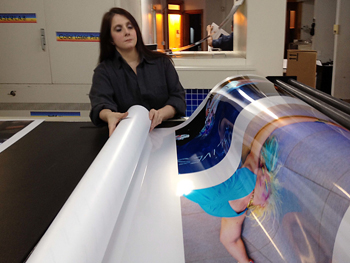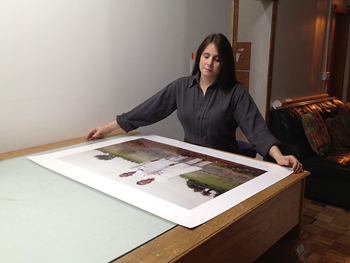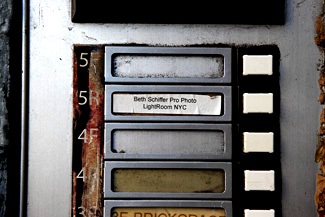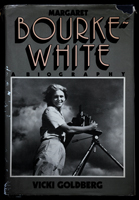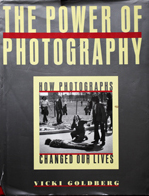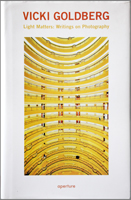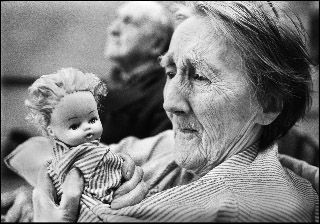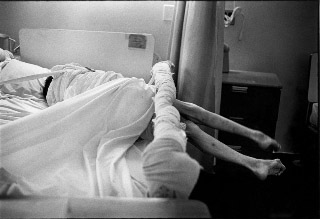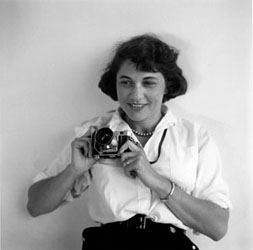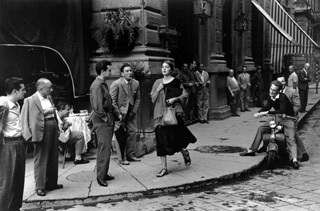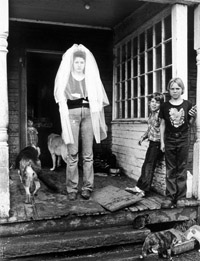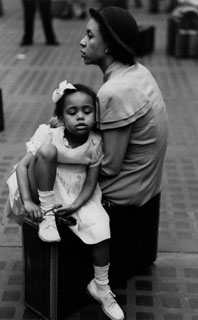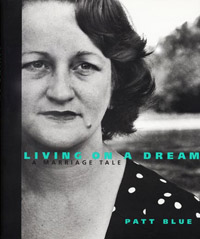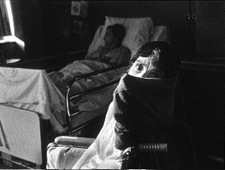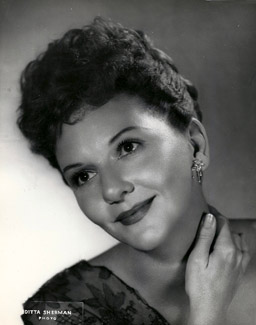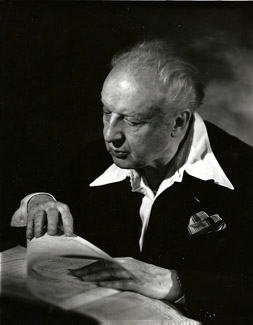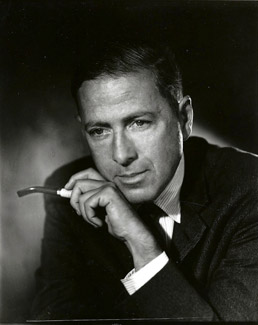Tag Archives: 30 x 30
30 By 30: Anonymous / Her Mother
30 Women Photographers and the Women Photographers Who Inspired Them
A Blog Series in Honor of Women’s History Month, March 1 – 31
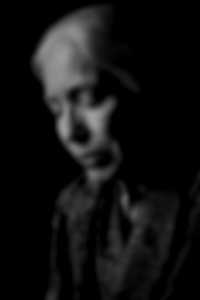 This participating photographer asked to remain anonymous and PWP honored her request.
This participating photographer asked to remain anonymous and PWP honored her request.
Which woman photographer inspired you the most?
A: More than anyone else, my mother. I almost hate to admit it. We were incredibly different and fought a lot. Our fights were major events in the household. Frazier and Ali, Ali and Liston, Holyfield, Tyson-they had nothing on mom and me. We could duke it out like nobody’s business. She was made of steel. If you wanted praise, you had to earn it. If you wanted love, you had to win it, and it was of the tougher variety.
Mom had a dark side and a wild side. She appeared to be one of those respectable middle class ladies, but was in part unhappy with this role. To liven things up, she would go on a bender from time to time. I was the target of some of the rage the liquor stirred up. When I got a camera, I photographed some of that too. She was a good model. No hamming it up, no silly poses. She had the ability to look you right back in the eye. She knew who she was! In an odd way, I suppose, she was at peace with herself, even if it was an angry sort of peace.
Yet somewhere in the midst of the liquor and angry words, once the camera came out, there would be a change, ever so slight, in her mood and mine. Some hex had been broken. It was like we were meeting on a special plane, united in purpose. We were going to make a picture! Together! I would give a few gentle directions, and she would follow, more mellow now. Maybe it was a distraction that reset some internal switch. For me, a lesson was learned: art mattered and was worth pausing for. Another lesson was that there is a way to every person, through the mess of demons, shadows and loony ideas. That you have to try to understand the phobias and fears as the other person experiences them.
One semester I signed up for photography, but when we got to the camera store, got cold feet. But if I was hesitant, she was insistent. As the employees vacuumed and tidied up around us, hoping to get started on their weekend, eavesdropping on the spellbinding, emotionally charged scene, a decision was made and a couple of hundred dollars forked over at the very last minute. I had a camera, I began.
While she is no longer here, her determination informs everything I do. She is with me always-every frame, every shot. At my shoulder, my angel, and I guess a little bit my demon too. We all need demons, a few at least. No life is complete without them. They make us who we are and keep us going.
The funny thing is, my mother was a good photographer herself. After seeing me go at it awhile, she decided that she wanted a camera too, a real one. So my father and I bought her a really good one (which I still have), and signed her up for a course. Her talent was evident from the start, but the odd combination of extreme sensitivity and extreme volatility came into play, and she and the teacher developed a dislike for each other. Okay, the teacher probably had a mild dislike, but my mother had a full-on hate that flared into rage. The other students were “coddled” and “pampered;” they were the “class pets” while she was ignored. As you can imagine, listening to the back end of this drama was difficult. The class ended and slowly her interest faded (as did that particular rage), and mom went back happily to her instamatic, badgering the man at the local camera store (who qualified for sainthood) about paper and printing choices and how to put pictures together to make a panorama.
Any advice for photographers today?
A: Do the best you can. And hug your mom.
___________________________________________________
Professional Women Photographers wants to thank the spectacularly gifted women photographers and industry professionals who shared their time, insights and images for this series: Dianora Niccolini, Lauren Fleishman, Darleen Rubin, Dannielle Hayes, Meryl Meisler, Shana Schnur, Claudia Kunin, Gigi Stoll, Flo Fox, Robbie Kaye, Alice Sachs Zimet, Juliana Sohn, Susan May Tell, Nora Kobrenik, Caroline Coon, Lisa Kahane, Karen Smul, Claudia Sohrens, Laine Wyatt, Ruth Fremson, Greer Muldowney, Rachel Barrett, Aline Smithson, Ann George, Judi Bommarito, Kay Kenny, Editta Sherman, Patt Blue, Vicki Goldberg, Beth Schiffer, and Anonymous.
PWP also gratefully acknowledges the Imogen Cunningham Trust, the Center for Creative Photography, and the Ruth Orkin Photo Archive for allowing the use of images by Imogen Cunningham, Louise Dahl-Wolfe and Ruth Orkin.
On a personal note, I would like to thank Beth Portnoi Shaw, Trish Mayo, Terry Berenson, Adele Epstein, Pamela Greene, Meryl Meisler and Jackie Neale Chadwick for their help and support throughout this project.
- Catherine Kirkpatrick, Archives Director
______________________________
30 By 30 blog series:
Intro: Dianora Niccolini / Women of Vision
Lauren Fleishman / Nan Goldin
Darleen Rubin / Louise Dahl-Wolfe
Dannielle Hayes / Diane Arbus
Meryl Meisler / Via Wynroth
Shana Schnur / Louise Dahl-Wolfe
Claudia Kunin / Imogen Cunningham
Gigi Stoll / Flo Fox
Robbie Kaye / Abi Hodes
Alice Sachs Zimet / Lisette Model
Juliana Sohn / Sally Mann
Susan May Tell / Lilo Raymond
Nora Kobrenik / Cindy Sherman
Caroline Coon / Ida Kar
Lisa Kahane / Jill Freedman
Karen Smul / Dorothea Lange
Claudia Sohrens / Martha Rosler
Laine Wyatt / Diane Arbus
Ruth Fremson / Strength From the Many
Greer Muldowney / Lee Miller
Rachel Barrett / Vera Lutter
Aline Smithson / Brigitte Lacombe
Ann George / Josephine Sacabo
Judi Bommarito / Mary Ellen Mark
Kay Kenny / Judy Dater
Editta Sherman / The Natural
Patt Blue / Ruth Orkin
Vicki Goldberg / Margaret Bourke-White
Beth Schiffer / Carrie Mae Weems
Anonymous / Her Mother
30 By 30: Beth Schiffer / Carrie Mae Weems
30 Women Photographers and the Women Photographers Who Inspired Them
A Blog Series in Honor of Women’s History Month, March 1 – 31
Beth Schiffer graduated from The School of Visual Arts with a BFA, and took a job as a “spotter” in a commercial color lab, even though her primary interest was black and white photography. Impressed by her work ethic, the manager trained her as a color printer, and she discovered a love of and talent for making other photographers’ work look its best. In 1992, she opened her highly regarded Pro>Photo Labs in Tribeca, and has since worked with major players in many industries and “some of the most amazing artists in the world.€
Which woman photographer inspired you the most?
BS: Beyond a doubt, this artist is Carrie Mae Weems. I first met Carrie when she came to my lab to print her wonderful series “From Here I Saw What Happened and I Cried.€ It’s composed of thirty-four appropriated photographs of African-American slaves, which Carrie found mostly in the Harvard University Archives. The photographs are in black and white, but she printed them in a deep red tone, which I always thought was symbolic of blood.
All the images are displayed behind a circular black mat, with a thick black wooden frame. The glass covering each photograph is etched with words and phrases of prejudice, racism and stereotyping. The slaves have no names. They are identified by their role on the plantation. For example, a young man is identified as “RIDER’S & MEN OF LETTERS.€ Carrie’s message comes out loud and strong: a slave was not a person, he or she was just a function. Her message is about her own race, but I think that any group of people who have been oppressed can fully identify with it. I am pretty sure that Carrie intended her message to go beyond slavery, and to be an indictment of abuse perpetrated on people because of their ethnicity, gender, sexual preference, religion, or beliefs.
I hit the books while I was printing the exhibition, because I needed to know why the Founders of our country did not abolish slavery when they wrote the Constitution. What I found was that some of our heroes were hypocritical on the subject. Thomas Jefferson, who wrote the Declaration of Independence, was a slave owner, as were many other Founders of the United States of America. Jefferson wrote, ” We hold these truths to be self-evident, that all men are created equal, that they are endowed by their Creator with certain inalienable Rights, that among these are Life, Liberty, and the Pursuit of Happiness.” Those who proclaimed this in 1776 thought it pertained to themselves, but not to Negro slaves, whom they considered inferior and not “created equal.” They deprived them of liberty and the pursuit of happiness.
For the purpose of taxation and representation in the legislature, slaves were counted as 3/5ths of a person in the U.S. Constitution. The Constitution prohibited the slave trade, not at the ratification of the Constitution in 1787, but 21 years later. It did not end slavery. Slave owners were willing to stop importing slaves because they had enough through children born to slaves. Many Founders believed that slavery was wrong, but their economic interests superseded their principles.
I think I was not alone in being inspired by Carrie Mae Weems to learn more about the institution of slavery, which is blight on our history. She captures this inhumanity in a way that is more powerful than any writing on the subject. It hits you like a punch in the stomach. Carrie said she cried, and so do we, the viewers of this series.
Aside from being a devoted fan of Carrie’s work, I also have tremendous respect for her as a woman. She’s younger than my mother, but when I first met Carrie, she immediately reminded me of her in many ways.
Growing up in the 70′s, most of my friends and classmates still had stay-at-home moms. My mother, however, was educated and a professional. She was, and still is very beautiful. When she was young, she was a model who was represented by one of the best agencies of that time. Although she worked steadily, it really didn’t interest her at all. She was much more interested in learning and education and being recognized for those assets. She went on to be a professor, a school principal, and an executive in a government organization.
My mother taught me by her example and her words, to pursue my own talents and dreams, and to be independent and self-sufficient. Having my own business was a natural course for me.
I have always respected women who can be strong and independent, and still be attractive and feminine. Carrie Mae Weems exemplifies these values. When we’ve worked together, she always knew exactly what she wanted to say. She was confident, self-assured, warm and nurturing, caring, generous, respectful, sexy, beautiful and very, very feminine.
In addition to racial issues, Weem’s work also focuses on gender and family, and the traditional roles and relationships in the African-American community. This is the topic of one of my favorite Weem’s series, “The Kitchen Table.” In it, Carrie carefully staged twenty different scenes at her at her kitchen table. Using herself as the subject, and taking each photograph from approximately the same point of view, each individual image depicts a women’s identity in relationship to her husband or lover, a mother’s with her daughter, as well as friendships and relationships with women. This work gives the viewer a revealing insight into a women’s role in the African-American culture.
There is one more thing that I would like to thank Carrie Mae Weems for. Carrie was so generous, and because she knew how much I admired her work, she gave me a gift of two pieces of art from both of the series that I worked on. I cherish these pieces, and realize we are often unaware of the difference we make in peoples lives!
As a business woman, have you faced discrimination because of your gender?
BS: As a lab owner, I have not experienced discrimination with artists and photographers, photo editors, gallerys, etc. I do recall when I was pregnant and when my first child was born, keeping it a secret from clients that I didn’t know well, such as photo editors and art directors because I was afraid they would have concerns about my availability and dedication to my business. I remember thinking if I was a new father, this wouldn’t be the case. People often think that a new father will work harder because he has a child to support.
But a funny thing happened. Little by little, it was revealed that some of these photo editors and art directors were also having children of their own, and I often felt a camaraderie and understanding between us.
Outside the creative industry, I learned that I paid much more, often with much higher interest rates, for very expensive leased equipment. It is usual for business owners to lease equipment for five years, with a $1 buy out. During some business expansions, I learned I had paid significantly more for the same piece of equipment than male lab owners did. When one lab owner saw what I had paid for the same exact film processor, he was shocked and showed me a receipt that was about 40% less than what I paid. Hearing this, I did some further investigation. What I learned was that buying this equipment is similar to buying a car-negotiating is expected. Because I bought equipment from the same people, over and over again over the years, I do feel I was taken advantage of. Whether this is because I’m a woman, I can’t say; at the very least, I don’t think I intimidated the salesmen at all. In the future, I will know a lot better.
Do you feel that women photographers are in a good place today or is there more work to be done?
BS: I really can’t say. I know that maybe half of my clients are women, but I think most of my more successful clients are men. I feel that women should continue supporting other women and that woman artists should keep up the great work they’ve been doing.
Despite their many accomplishments, women are often forced to make hard choices between their personal and professional lives. Have events in your own life affected your business?
BS: As the mother of two, there were many times I felt conflicted about my devotion to my kids and my business. I was so fortunate to have an amazing woman working for me at home. My kids were crazy about her, and so was I. I often felt guilty, but always made sure they came first and was present at important events. I think my biggest regret was spoiling them because I felt guilty for working so much.
Any advice to women photographers today?
BS: The first advice I’d give to women photographers is that if you choose to have a family, have a good plan about how to balance family and work. The other advice for every photographer, male or female, is that in these hard times it pays to diversify. Think of new ways to make a living as a photographer. Photography is a wonderful art form, but it is still a business.
Carrie Mae Weems is a photographer with numerous, magnificent bodies of work. Her early series were in a documentary vein, but have grown deeper and richer to include appropriated images, text, fabric, audio and video. With an artist’s eye, determination and compassion, she has cast a light onto people overlooked by history and history that wasn’t counted as history.
Weems was born in 1953 in Portland, Oregon, and had an early interest in dance and street theater. She began taking pictures in 1973, and has a BFA from the California Institute of the Arts, and an MFA in photography from the University of California, San Diego. Her work has been exhibited widely, and in September of 2012, will be the subject of a major retrospective at the Frist Center for the Visual Arts in Nashville. This exhibit will travel to the Portland Art Museum, the Cleveland Museum of Art, and the Guggenheim Museum. She is represented by the Jack Shainman Gallery in New York.
- Catherine Kirkpatrick, Archives Director
______________________________
30 By 30 blog series:
Intro: Dianora Niccolini / Women of Vision
Lauren Fleishman / Nan Goldin
Darleen Rubin / Louise Dahl-Wolfe
Dannielle Hayes / Diane Arbus
Meryl Meisler / Via Wynroth
Shana Schnur / Louise Dahl-Wolfe
Claudia Kunin / Imogen Cunningham
Gigi Stoll / Flo Fox
Robbie Kaye / Abi Hodes
Alice Sachs Zimet / Lisette Model
Juliana Sohn / Sally Mann
Susan May Tell / Lilo Raymond
Nora Kobrenik / Cindy Sherman
Caroline Coon / Ida Kar
Lisa Kahane / Jill Freedman
Karen Smul / Dorothea Lange
Claudia Sohrens / Martha Rosler
Laine Wyatt / Diane Arbus
Ruth Fremson / Strength From the Many
Greer Muldowney / Lee Miller
Rachel Barrett / Vera Lutter
Aline Smithson / Brigitte Lacombe
Ann George / Josephine Sacabo
Judi Bommarito / Mary Ellen Mark
Kay Kenny / Judy Dater
Editta Sherman / The Natural
Patt Blue / Ruth Orkin
Vicki Goldberg / Margaret Bourke-White
Beth Schiffer / Carrie Mae Weems
Anonymous / Her Mother
30 By 30: Vicki Goldberg / Margaret Bourke-White
30 Women Photographers and the Women Photographers Who Inspired Them
A Blog Series in Honor of Women’s History Month, March 1 – 31
Vicki Goldberg is a writer and lecturer on photography and art. Her many books include The Power of Photography: How Photographs Changed Our Lives, Light Matters: Writings on Photography, and Margaret Bourke-White: A Biography. Her articles have appeared in many publications, including the New York Times, Vanity Fair, Smithsonian, American Photo, Art in America, ARTnews, and Aperture. As a thinker and writer on photography, she has no peer.
Her many awards include the Missouri Honor Medal for Distinguished Service in Journalism from the University of Missouri School of Journalism, the Dudley Johnston Award from The Royal Photographic Society, and the Infinity Award for Writing from the International Center of Photography.
Her latest book is The White House: The President’s Home in Photographs and History. Done in cooperation with the White House Historical Association, it is a rich, picture-filled history of America’s most famous residence and a delightful read.
What was it about Margaret Bourke-White that captured your imagination?
VG: I knew zero about Bourke-White before I got an assignment early in my writing career to write about the sale of her house some years after her death-only the second article I’d ever written having anything to do with photography. Research revealed a woman who was indomitable, had a formidable career, and perhaps most impressive of all to me at that time, had fought Parkinson’s with determination and bravery. Her photography was impressive enough and not well-known back then, but from what I gleaned about her life, it appeared to be at least as groundbreaking and inspirational. And, I later learned, influential-a model for many women photographers who were encouraged by her success.
In her day, Margaret Bourke-White was a lone woman in a man’s profession. Many things have changed. What barriers remain for women in the photographic field?
VG: If a woman wants to report and needs to travel extensively to do so, family is a barrier. (But then, photojournalism has become a difficult profession for men and women alike with the shrinking print media.) Balancing career and children is difficult for anyone, probably more so for women. Even so, it’s obviously no longer just a man’s profession. Cindy Sherman is one of the best-known names in the art world, Annie Leibovitz is probably the best-known photographer the world over.
Bourke-White’s early marriage and divorce led her to put career first. Today women are expected to shoulder both family and professional lives, and face many tough choices. Can you comment on this?
VG: I have no advice, think everyone has to make her own choices in life, and every choice, no matter how right, comes with costs of what’s left behind. I do think that women in an art field have a trifle more leeway-they can usually maneuver their work hours more readily than those with full-time jobs.
In today’s world anyone with a camera phone can document historical events. How does this change the traditional role of the true documentary photographer, one who has studied and honed their craft and developed a strong visual style?
VG: News is more threatened than traditional documentary, but documentary has been in a kind of limbo for some years as newspapers and journals died, cut back on photo essays, or shifted toward celebrities. Documentary photographers today generally have to fund their own endeavors, which isn’t easy. Some qualify for galleries, which have broadened their outlook; some for books, which oddly enough keep being produced; some have branched into video, which can provide a TV outlet; and almost anyone can get work onto the web-and get paid nothing for it. Still, prominent documentarians have put a lot of their work on the web. Incidentally, there is much more space for documentary in Asia (China, for instance, and I think Korea) than in the west.
How has the digital revolution changed photography?
VG: Like most revolutions, this one has made things both better and worse. Better for non-professionals: the “average€ person can now make a pretty good photograph, in focus, etc., and visual literacy has increased sufficiently so that many an amateur can turn out pictures that are a good deal more than acceptable. Worse: we don’t have filters that can distinguish quality, avant-garde (if that still exists), or almost anything else from the morass of okay or okay-plus photographs out there. Better: citizen journalism, which has been around a long time, has turned many more people into reporters and made more events visible. Worse: photojournalists have more competition than ever. Better: fewer toxic chemicals in printing. Easier adjustments to tone, color, etc. Worse: this has put the seal on distrust of photographs. Urgent with news, not so urgent with art, but it has created a new relationship to photographs, which now often come with a question: is this photoshopped? Is it staged? Better: even an unknown photographer can make work available worldwide. Worse: zero dollars for this, and quite possibly zero audience. Better: it’s possible to self-publish a book of photographs, though marketing is not so easy. Worse: photographs are so omnipresent and over abundant that there’s a tendency to overlook them, to glance at rather than look at them. More difficult: authorship and copyright are both threatened. Interactivity and “sampling€ may become the norm.
And new technologies could bring new revolutions in their wake: the Lytro allows the viewer to change the focus on someone else’s image, an operable camera that I don’t believe is yet on the market can see around corners, and experiments are being done on implanting cameras.
_______________________________
Margaret Bourke-White was born in 1904 in the Bronx. Beginning as an architectural and industrial photographer in Cleveland, she was recruited by Henry Luce to work for Fortune Magazine, then LIFE, where her photograph of the Fort Peck Dam graced the first cover.
She had a talent for being on the spot when history happened, photographing the Soviet Union in the early 30′s, the dust bowl of 1934, the Depression (paired with writer Erskine Caldwell), World War II, and Mahatma Gandhi just before his assassination.
An early marriage to Everett Chapman ended in divorce, as did her second to Erskine Caldwell. She died in 1971 from complications of Parkinson’s Disease which she had endured for many years. With a life as dramatic as her images, she blazed a trail for women photographers, and inspired people worldwide.
______________________________
30 By 30 blog series:
Intro: Dianora Niccolini / Women of Vision
Lauren Fleishman / Nan Goldin
Darleen Rubin / Louise Dahl-Wolfe
Dannielle Hayes / Diane Arbus
Meryl Meisler / Via Wynroth
Shana Schnur / Louise Dahl-Wolfe
Claudia Kunin / Imogen Cunningham
Gigi Stoll / Flo Fox
Robbie Kaye / Abi Hodes
Alice Sachs Zimet / Lisette Model
Juliana Sohn / Sally Mann
Susan May Tell / Lilo Raymond
Nora Kobrenik / Cindy Sherman
Caroline Coon / Ida Kar
Lisa Kahane / Jill Freedman
Karen Smul / Dorothea Lange
Claudia Sohrens / Martha Rosler
Laine Wyatt / Diane Arbus
Ruth Fremson / Strength From the Many
Greer Muldowney / Lee Miller
Rachel Barrett / Vera Lutter
Aline Smithson / Brigitte Lacombe
Ann George / Josephine Sacabo
Judi Bommarito / Mary Ellen Mark
Kay Kenny / Judy Dater
Editta Sherman / The Natural
Patt Blue / Ruth Orkin
Vicki Goldberg / Margaret Bourke-White
Beth Schiffer / Carrie Mae Weems
Anonymous / Her Mother
30 By 30: Patt Blue / Ruth Orkin
30 Women Photographers and the Women Photographers Who Inspired Them
A Blog Series in Honor of Women’s History Month, March 1 – 31
Patt Blue is a photographer known for her intense, long-term documentary projects and unflinching eye. In the 1980′s, images from “Other People,€ her study of disabled residents at Goldwater Memorial Hospital, were published in LIFE Magazine and recognized by the Leica Medal of Excellence for Humanistic Photography and a Robert F. Kennedy Journalism Citation, among many honors.
Other bodies of work include “How Far Is Heaven,€ about the culture of poverty in a rural family of twelve; “Heart of Man,€ depicting the struggle between the corporeal and the spiritual for male figures; and “Biologically Yours,€ a study of teen mothers facing pregnancy and surrendering their babies on their own. In “Facetime,€ Blue documents her own aging, and “Torn Wing€ expresses homelessness of heart, mind and body through photographs and writing.
Blue is also a challenging and imaginative photographic educator who has taught at the International Center of Photography, New York University, Moore College of Art, and Kean University. She is currently on the faculty of Evergreen State College. Her 1998 memoir, Living On A Dream: A Marriage Tale, portrays her parents’ tortured relationship through her father’s photographs and interviews with her mother. It won the Golden Light Award for Best Personal Essay and received four stars from Publisher’s Weekly.
She is a special photographer, with toughness, courage and heart.
Tell us about the woman photographer who inspired you most.
PB: I met Ruth Orkin in the late 70s at ICP where I was on the faculty and Coordinator of Darkroom Programs. Ruth was a constant figure at the massive openings, though I didn’t know at the time she was a great photographer. Ruth was a talker and didn’t mind getting right to what was on her mind. At that time it was Cancer. I would say, “Ruth, what are you doing here?€ I thought an opening would not be so very important if I were battling cancer, but Ruth would brush it off: “But what can I do? I love being here!€ Though she was on a survival path, she was upbeat and embraced the world as a friendly place. I felt the world to be a fearful and insecure place that I had to conquer. Ruth was a marvel for me because she had a positive personality without the angst and edge. She raised my awareness of how to enjoy the challenges. Although we were as different as night and day, mirrors and windows, it was because of this difference that I learned from Ruth.
What was her background?
PB:Ruth Orkin, 1921-1985, was a self-made working photographer who first made her way knocking on doors taking baby pictures, then entered the man’s world of photojournalism, making great classic, unforgettable photographs of people. In the New York of the 1940′s, as a woman photographer, she was way ahead of her time.
Ruth was so unpretentious and open, that not many of us younger photographers truly knew her history as a photojournalist. We hadn’t seen her iconic images of the “American Girl In Italy€ series, the Hollywood film stars, the New York stage and music world. At this time in the 70′s, she was making photographs of Central Park from her window using color film-her way of continuing to photograph while taking care of her children at home. She knew the thinking about a woman at home: “They think I’m this housewife that photographs out her window, but they don’t know that I have a whole body of work.€ Harper & Row published The World Through My Window in 1978.
Ruth says she chose photography as a practical choice from her four passions: travel, music, film and photography. Unlike Ruth, I naively never considered photography a livelihood; it was driven by an inner necessity for social change. But I was in awe of Ruth’s attitude: a way-ahead-of-her-time woman photographer in the 1930′s and 40′s who thought photography was a way to earn a living. This was a novel idea for a woman of her day.
Ruth used all her personal life experience to make her way. As a musician, she easily moved in the music world of New York and Tanglewood; as the daughter of silent-film actress Mary Ruby, she felt comfortable in the world of Hollywood with stars like Ava Gardner, Marlon Brando and Woody Allen. Ruth was Jewish and found her way to Israel, making some of her great images of women as she traveled alone around Europe. Her photographic series of Jinx Allen, “American Girl in Italy,€ 1951, has become world-renowned.
Ruth says she first experienced discrimination not as a photojournalist, but when she wanted to be a cinematographer and women weren’t allowed to join the union. Now that I’m at the age Ruth was back then, I’m just becoming aware of the discrimination. Because Ruth and I shared an optimistic “anything is possible€ attitude as working photographers, I wondered if she like I, might have been blind to discrimination. Harold Evans once told me I was too fragile to work for The London Sunday Times, and I was told I was not aggressive enough to cover famine in Ethiopia. When I showed my Goldwater Hospital work to Cornell Capa, he advised charmingly, “Blue, can’t you do anything else?€ Later he surprised me with an apology and asked me to lecture. This I believe is the character of a great man.
Ruth became a filmmaker anyway on her own terms when she married filmmaker Morris Engel in 1952. With her eye and film background, she easily became his editor and co-director, beginning with Little Fugitive which won a Silver Lion at the 1953 Venice Film Festival, and was an Academy Award„¢ Nominee for “Best Motion Picture Story.€
Like Ruth, who found a way to make photographs in A World Through My Window while raising children and editing films in her apartment, I found a way to make photographs while teaching full time and writing Living On A Dream, tethered to a computer. During this time I began my aging series, “Facetime,€ which is now in its 20th year.
Ruth Orkin’s photographs were included in the Young Photographers show (1950) and the landmark Family of Man exhibit (1955) at the Museum of Modern Art. The greatest exposure of Ruth’s work has come posthumously thanks to her daughter, Mary Engel, who lovingly handles the Ruth Orkin Photo Archive. When Ruth finally passed away after an 18 year fight with breast cancer, Mary organized a memorial tribute at the Ethical Cultural Center in Manhattan where Leonard Bernstein and Isaac Stern performed. In 1995, ICP held a retrospective. Her photographs are now on exhibit in The Radical Camera: New York’s Photo League at The Jewish Museum in New York.
“Being a photographer is making people look at what I want them to look at.€ Ruth Orkin
“I photograph to bring the inside and outside together, to make that connection.€ Patt Blue
_______________________________________
Professional Women Photographers wishes to thank Mary Engel, Director of the Ruth Orkin Photo Archive for permission to use the photographs by and of Ruth Orkin. Engel is an award-winning filmmaker whose first film Ruth Orkin: Frames of Life premiered at the Sundance Film Festival, and was selected by the Academy of Motion Picture Arts and Sciences as one of the “Outstanding Documentaries of 1996.€
In 2006, Engel founded the Orkin/Engel Film and Photo Archive to perpetuate the work of both her parents, Ruth Orkin and Morris Engel. She is also the founder of the American Photography Archives Group, a organization for individuals who own or manage a privately held photography archive, usually the work of a family member.
- Catherine Kirkpatrick, Archives Director
______________________________
30 By 30 blog series:
Intro: Dianora Niccolini / Women of Vision
Lauren Fleishman / Nan Goldin
Darleen Rubin / Louise Dahl-Wolfe
Dannielle Hayes / Diane Arbus
Meryl Meisler / Via Wynroth
Shana Schnur / Louise Dahl-Wolfe
Claudia Kunin / Imogen Cunningham
Gigi Stoll / Flo Fox
Robbie Kaye / Abi Hodes
Alice Sachs Zimet / Lisette Model
Juliana Sohn / Sally Mann
Susan May Tell / Lilo Raymond
Nora Kobrenik / Cindy Sherman
Caroline Coon / Ida Kar
Lisa Kahane / Jill Freedman
Karen Smul / Dorothea Lange
Claudia Sohrens / Martha Rosler
Laine Wyatt / Diane Arbus
Ruth Fremson / Strength From the Many
Greer Muldowney / Lee Miller
Rachel Barrett / Vera Lutter
Aline Smithson / Brigitte Lacombe
Ann George / Josephine Sacabo
Judi Bommarito / Mary Ellen Mark
Kay Kenny / Judy Dater
Editta Sherman / The Natural
Patt Blue / Ruth Orkin
Vicki Goldberg / Margaret Bourke-White
Beth Schiffer / Carrie Mae Weems
Anonymous / Her Mother
30 By 30: Editta Sherman / The Natural
30 Women Photographers and the Women Photographers Who Inspired Them
A Blog Series in Honor of Women’s History Month, March 1 – 31
Editta Sherman is a legendary portrait photographer who has captured many famous figures of the stage, screen and world. For years she worked in a studio in Carnegie Hall, where she also socialized with the likes of Andy Warhol and Bill Cunningham, and lived a joyous, buoyant vie bohème. The artist residents were evicted from Carnegie Hall in 2010, but Sherman’s spirit remains undiminished. She will be a hundred years young in July and is still going strong.
Which woman photographer inspired you the most?
ES: When I began, it was a time when most women were not interested in photography as a career. They may have had a small camera as a hobby, and I do remember a woman photographer who photographed Abe Lincoln and other well-known people, though I can’t remember her name. I saw a book she did around 1885, and was inspired by the way she did portraits.
For the most part, my work grew from my early experience as an “intern” assisting my father in and around his New Jersey studio during the Depression. He mentored me in all the technical aspects of portrait photography as we struggled to create income from a bootstrap business.
My life as a professional photographer emerged from necessity a second time. My husband, a gifted audio engineer and inventor, was in failing health with gradual blindness and frequent hospitalizations from kidney failure. So we decided to turn my childhood photographic ability into a business. Our venture began with a successful summer taking pictures of celebrity subjects in Edgartown, Massachusetts, just after World War II. In 1946, we moved to New York City with our five children to establish Sherman Studios on East 57th Street. My husband was my business manager and able photographic assistant until his death in the early 1950′s. My photographic productivity was at its height in the period from 1946 to 1960, though I continue to shoot as I approach my 100th birthday in July, 2012.
Some of my exhibitions include one in 1967 at Grand Central Station sponsored by Eastman Kodak and commissioned by Leopold Mannes, the co-inventor of Ektachrome (color processing). I also had a show in the Waldorf Astoria in the 1950′s, and the Hilton Hotel in the 1970′s.
Who taught you how to see things?۬
ES: My father taught me about lighting, that you don’t need many lights, but my photographic eye and ability to catch my subject is something that I had naturally. From the first, I was able to warm my sometimes very self-conscious, rushed subject to the large camera with its huge lens, and get them to relax as I squeezed the shutter, catching that certain something that made them look special.
You’ve lived a long, colorful, and fascinating life. What is your secret?€¨
ES: I have always been passionate about my photography: developing the pictures, creating and seeing the subject come to life on the paper in the darkroom. I was always interested in meeting new stars, photographing them, and seeing the movies they starred in. I also enjoy being interviewed and talking and sharing my work with others.
My secret to a long life has been to eat real food and exercise, keep a positive outlook and be open for adventure. Also having a vivid imagination and looking for fun things to do helps. Add a thirst for celebrity-to be one and to be among them-which has given me satisfaction and impetus. And of course, being blessed with five children, eleven grandchildren and seventeen great grandchildren is the cherry on top.
What advice would you give to photographers today?۬
ES:Work hard, find your bliss, realize that the thing that frustrates you is also the thing that also gives you pleasure. Look to others-photographers and friends-but develop your own style, and have fun. It’s a hard road, but if you love it and stick to it long enough, you will be successful. Follow your dreams, persevere, and never give up! Remember it is not the camera, but the person behind the camera that makes the difference!
- Catherine Kirkpatrick, Archives Director
_____________________________
30 By 30 blog series so far:
Intro: Dianora Niccolini / Women of Vision
Lauren Fleishman / Nan Goldin
Darleen Rubin / Louise Dahl-Wolfe
Dannielle Hayes / Diane Arbus
Meryl Meisler / Via Wynroth
Shana Schnur / Louise Dahl-Wolfe
Claudia Kunin / Imogen Cunningham
Gigi Stoll / Flo Fox
Robbie Kaye / Abi Hodes
Alice Sachs Zimet / Lisette Model
Juliana Sohn / Sally Mann
Susan May Tell / Lilo Raymond
Nora Kobrenik / Cindy Sherman
Caroline Coon / Ida Kar
Lisa Kahane / Jill Freedman
Karen Smul / Dorothea Lange
Claudia Sohrens / Martha Rosler
Laine Wyatt / Diane Arbus
Ruth Fremson / Strength From the Many
Greer Muldowney / Lee Miller
Rachel Barrett / Vera Lutter
Aline Smithson / Brigitte Lacombe
Ann George / Josephine Sacabo
Judi Bommarito / Mary Ellen Mark
Kay Kenny / Judy Dater
Editta Sherman / The Natural
Patt Blue / Ruth Orkin
Vicki Goldberg / Margaret Bourke-White
Beth Schiffer / Carrie Mae Weems
Anonymous / Her Mother


